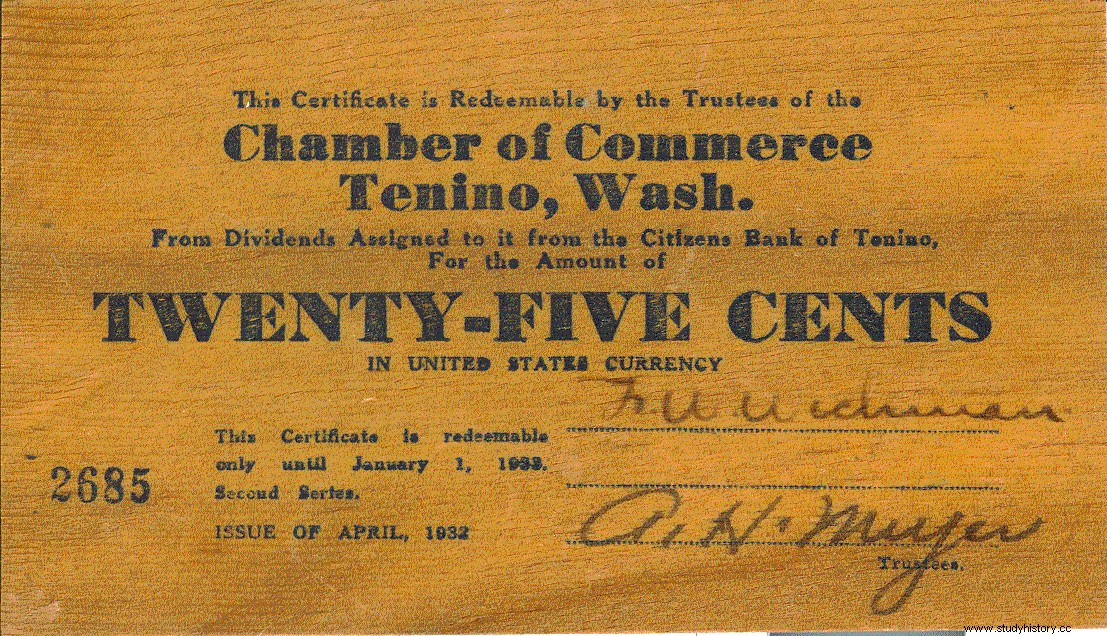After the crack of 29 and the Great Depression of the 1930s the greatest economic crisis of the 20th century took place, due to its duration and its consequences at a global level.
Speculation (I would call it human greed) made shares rise until the bubble burst on October 24, 1929 (Black Thursday ). Millions of orders to sell shares were given but no one could buy them anymore, panic spread and the American stock market crashed (October 29, Black Tuesday ). People went to the banks to recover their savings but there was no money (it was invested in stocks and loans). The banks were falling like a house of cards. Businesses began to close and unemployment spread across the country.
One of these banks was The Citizens Bank from the small town of Tenino (Washington) that on December 7, 1931 literally closed its doors. During the Bank's liquidation process, client accounts were frozen and cash ceased to circulate. Faced with this emergency situation, the Chamber of Commerce met and agreed to issue wooden money (wood money ) while the process lasted and due to the scarcity of money. They were sheets of cedar and oak the size of paper money and signed by the members of the Chamber of Commerce. $3,255 in $0.25, $1, $5 and $10 “bills” were issued of which about 1,279 dollars were put into circulation.

Wooden Money

Wooden Money2
In 1933, Blaine (Washington) issued round wooden coins when his bank failed. If you want to get "wooden money" on this eBay page you can buy it .
Sources:Tenino Chambers of Commerce, City of Tenino
